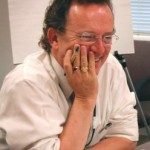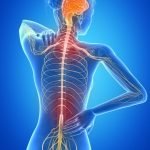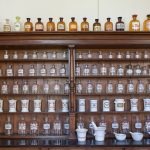Plus ça Change
Education
David J. Schleich, PhD
In the world of regulatory and public policy debate, some sighing from time to time among healthcare providers is understandable. The road is long. Naturopathic leaders in many states can spend years in the pursuit of legislative parity and social closure. And even when a law is enacted, the biomedicine profession continues to eschew inter-professional collaboration, understanding acceptance to mean co-option, most often. Nevertheless, recent successes in New Mexico, Idaho, Massachusetts, Pennsylvania, Rhode Island, Maryland, North Dakota, Colorado, and Minnesota encourage persistence and bring the medicine to more and more people.
It is probably inevitable, though, that those who are longer-in-the-tooth experientially in this key element of professional formation can occasionally slip into a feeling of “plus ça change, plus c’est la même chose” [the more things change, the more they stay the same]. Take the recent legislative hearing in Alaska (May 2019) – yet another in a series of efforts to improve access to naturopathic medicine in America.
Finding Common Terrain
The recent Alaska hearings were brisk. In early May 2019, a dozen or so Alaskan medical doctors formed a queue to tell legislators that naturopathic doctors should not have their scope expanded. Supporters of naturopathic medicine experienced the presentations of the allopaths as overly reliant on anecdotal references, more emotive than analytical, and certainly regressive. Alaskan MDs did not appear to have benefitted from current data and information about the profession to which they were opposed. Unfortunately, such lopsided tangling persists in the American healthcare terrain as we seek ways to overcome health crisis crescendos, such as opioid misuse, the exponential incidence of chronic disease, the persistence of lethal iatrogenic disease, the endless upward spiral of healthcare costs, and the dubious effectiveness and sustainability of our current model.
Not only do the data indicate that Alaskan patients, as a case in point, beg to differ about the role and importance of naturopathic medicine in choices available to them as healthcare consumers, but so too do patients from the almost 2-dozen states in America which do credential naturopathic medicine doctors. At the root of the problem is that the sparring professional camps do not have enough bandwidth on the one side to educate their detractors, and on the other to take an interest in the continuum of medical history in America. How did we get here?
Alaskan allopathic doctors, likely as weary of the recurrent jousting as the naturopathic doctors themselves, would probably welcome historical and recent national as well as state-specific data about the qualifications, training, research, health outcomes, and licensing standards of groups other than themselves, since they are not going away anytime soon, and since the orthodox profession has long lost its moral high ground. There is enough disruption all around for everyone that reliable information and perspective are desirable in a time when the health of Americans is seriously and protractedly compromised. There is a way through. It may lie in giving more shelf space to history.
It is a challenge for conventional medical doctors to welcome new colleagues at the best of times, given the habits and privileges of authority of an established order. Biomedicine has had the advantage and also the burden of controlling the levers of health promotion and delivery for many decades. MDs and DOs, when presented with objective, helpful information about the unrelenting growth and popularity of holistic medicine knowledge content eschew it less as the evidence accumulates about the limits of reductionist medicine and the benefits of holism and collaboration. Like all providers, they are interested in proven efficacy of approaches. In the last half-century there has been much to check out.
Keeping in Mind Historical Context & Facts
The “integrative medicine” initiatives in America actually welcome more new “old” ideas about nutrition, whole-patient care, spirituality in medicine, and the danger of excessive reliance on pharmaceuticals. The Academy of Integrative Health & Medicine (AIHM) is a case in point. The rise in new codifying knowledge signaled by terminology such as “functional medicine” and “holistic medicine” is unstoppable because of the insistence on data and outcomes. This complex terrain makes more sense if we make the effort to investigate what’s new, keeping historical context and facts in mind. Surprisingly, what seems new may not be new at all, though – just new to certain groups. Despite the exasperation of biomedicine assimilating without apology treatment protocols long protected by naturopathic medicine, let’s do the history to figure out what can be done going forward.
The word “history” comes from the Greek istor, meaning “eyewitness.” We often study history using a rear-view chronology, perhaps too often habitually assessing outcomes in terms of present status. When we calibrate our current tools for health from that perspective, though, we risk missing the facts before us. For example, there is little broad discussion or debate about disease caused by medical treatments, even though the numbers in the tens of thousands are outrageously and unacceptably high. Why the silence? As well, there is veiled understanding of the types of illnesses that were fatal a century ago, compared to today’s statistics. Yet, well documented juxtapositions (historical, current) are illuminating.
Seeing no end in sight, sometimes contemporary naturopathic doctors often experience an ennui that they may have to give up precious values and principles from their past to have a place in the present. They will not go the way of the osteopathic profession whose educational and professional practice certifications and accreditation are subsumed within the orthodox MD agencies for these processes. The forces in play from biomedicine affect their confidence and strategic direction as they confront current historical shifts, reminiscent, in fact, of similar pressures a century ago. As everyone steams towards 2020, a look at how we have understood our own particular history is critical if we are not to repeat it. It is not a revisionist goal that contemporary historical scholars want to encourage. Rather, it is a clarifying intention which motivates, to see again, as if for the first time, what we have been doing during the last 12 decades to establish an alternative path to reductionist medicine. Even though Aristotle declared that history ranked below poetry and tragedy, a quick snapshot of the literature of our medical history, coupled with a parallel look at the structure of that history, can provide useful insights into what we should be doing next.
In the high-stakes professional playing field of healthcare delivery, we risk needlessly reinventing wheels. Recent allopathic discoveries in nutrition are not news to the elders of naturopathic medicine. New understanding of the links between gut health and the brain is old wisdom in the naturopathic profession. As time passes, and the tensions and emotions which affected judgment and action at one particular time dissipate, we risk becoming fuzzy about how we got to our present circumstances, about where we have been, and about why we sought the path we did. Contemporary historical scholarly inquiry, however, is increasingly multi-dimensional and nudges us to have a closer look at those “how’s, where’s and why’s.”
A quick look at the work of key historians such as Mészáros, Schmidt, and Toynbee can help us get perspective on awkward questions such as the underlying simmer of unfair competition from biomedicine, so evident in the lineup of testimony in the Alaska hearings, for example. Complicating the efforts of North American naturopathic medicine leaders to achieve recognition (translate: political legitimacy, making a living, social closure) is that holistic and reductionist practitioners alike yearn, like every small stream for an imagined faraway sea, for a time when respect for choice was less carved up by very big dollars, political entitlement, public policy, and regulatory red tape.
The study of the history of medicine, in any case, begs an understanding of the structure of that history. The classical historical scholarship formats of brilliant thinkers, such as Toynbee (1954), help sort out this complex turf. His definitions and classifications of civilizations, for example, and his well-known “laws” of genesis, growth, decay, death, and reincarnation give us a framework for understanding the rhythms and cycles of historical phenomena in our own world. Using such tools, we can understand our history more completely and imagine a future that doesn’t feel and look like repetition. Texas used to be licensed, for example. Florida, too.
Without our getting unduly distracted by the academic debate concerning the dialectic of “history vs structure,” let us reflect a moment on something Hegel called the “dialectical mediation” of logic and history. In this regard, what the history of naturopathic medical education reveals is a tension in how we experience “history as narrative” (a running debate about what is OK and not OK about how and what educational objectives, outcomes, and methodologies have evolved). Factions in the profession, for example, point at the schools as culprits in the abandonment of traditional values and practices. Essentially, as Schmidt (2013) points out, we may well have forgotten to cut ourselves some slack. The frequently linear nature of our historical narrative doesn’t make room for a more holistic sense of our own history. Schmidt calls this a loss of “historical consciousness” (Schmidt, MIT Press, 2013). The truth is that as we slip inexorably into the fast-running river of primary care, our idea of what health is, shifts.
It’s Dangerous to Abandon Our Roots
Specifically, in our highly evolved era of commodity exchange (provider receives benefit in exchange for a valued service, and competing providers jockey for control and advantage of their respective markets to get those benefits), and in an era which some historians believe to have reached a tipping point in capitalist enterprise (that is, when the exchange value does not have to address specifically any human need … only economic ones), we tend to separate out our knowledge and record of experience to do good in human society, from the sustained application of that knowledge in the marketplace. We divide our knowledge into didactic and clinical components which have not only utility and effectiveness as their measuring benchmarks, but also as political and regulated scope concerns in particular jurisdictions. These concerns arise as one group tries to control the marketplace and assert a particular point of view or “paradigm” and other groups expend their treasuries and their integrity to keep an oar in the race.
Thus, a strong link keeping past practice, philosophy, and principles present and valued (in the process of achieving social closure for the profession) has a dubious future unless the past is continually assessed in terms of present and near-future criteria. As I listened to the Alaska testimonies, I was uncomfortably aware of that dynamic. Mézáros puts it this way: “… the investigation of the dialectical relationship between structure and history is essential for a proper understanding of the nature and the defining characteristics of any social formation in which sustainable solutions are being sought to the encountered problems.” (Mézáros, 2011, p.ix)
This counsel is valuable, especially if taken in as a support and direction for strategic planning. Figuring out where we have fit, do fit, and will fit in the terrain of healthcare providers means we face the entire gamut of optimism, pessimism, and places in between. There is, of course, an assumption in the very statement that we have to “fit” anywhere. Some would argue, why can we not just be who we are, and other professional bodies can adjust to us? The realpolitik, however, is that the naturopathic medical system is a component of the larger, dominative US taxonomy of systems, notwithstanding our size. Hans Baer, a medical anthropologist, provided an analysis of this hierarchy of systems almost 2 decades ago (Baer, 2001), that very depiction of a hierarchy of systems itself being a reflection of what historical perspective we are assuming about the evolution of naturopathic medicine.
What we have to decide these days is which perspective to anchor our planning to. In this regard, there are 5 focus areas (or clusters of questions) for the planning agencies of naturopathic medicine to consider:
- Should we study more closely the specific history of the profession’s formation (accreditation, regulation, political status) or, instead, concentrate on regional differences as a platform from which to proceed? In practical terms, would this mean adopting a different legislation agenda in some states than in others?
- In considering differences in the profession’s location in civil society, might we examine scope, participation in clinical impact, research achievements, or public understanding and awareness of the medicine before aiming at a particular legislative outcome? If the latter, from which “culture” should we proceed: for example, the functioning of naturopathy in an unlicensed jurisdiction such as Wisconsin, a modified licensed jurisdiction such as North Dakota, or a primary care platform such as Oregon or Washington?
- What broad patterns from naturopathic medicine’s past are most useful going forward? Are those patterns deterministic, in the main, or can we isolate clear evidence of progress, confident that naturopathy as a medical system is unfolding as it should across the whole profession? Should we be trying to achieve homogeneity of standards of care, as the allopathic doctors have done?
- What individual changes or patterns are evident which can guide us in terms of the strongest position to take?
- Where are we headed, really? What, in the most realistic, pragmatic sense, characterizes what we understand to be progress?
Hans Baer has long been interested in the study of heterodox medical traditions. His position is that despite the efforts of Lust and others, naturopathy has not articulated in a consistent or standardized way a philosophical foundation or a treatment taxonomy embraced by all factions. He does, as pointed out in Table 1, locate naturopathy among a category of “Professionalized Heterodox Medical Systems.” (Baer, 2001, p.43) Baer explains, “Biomedicine is unable to establish complete hegemony in part because elites permit other forms of therapy to exist, but also because patients seek the services of alternative healers for a variety of reasons, such as the bureaucratic and iatrogenic drawbacks of biomedicine, as well as its therapeutic limitations.” (Baer, 2001, p.44)
Table 1. The American Dominative Medical System
|
Professionalized Orthodox Medical Systems |
|
|
Biomedicine [allopathic medicine] Osteopathic Medicine (a parallel medical system focusing on primary care) |
|
|
Professionalized Heterodox Medical Systems |
|
|
Chiropractic Naturopathy [naturopathic medicine] Acupuncture |
|
|
Partially Professionalized or Lay Heterodox Medical Systems |
|
|
Homeopathy Herbalism Bodywork Body/Mind Medicine Midwifery |
|
|
Anglo-American Religious Healing Systems |
|
|
Spiritualism Seventh-day Adventism New Thought Healing Systems (Christian Science, Unity, Religious Science, etc) Pentecostalism Scientology |
|
|
Folk Medical Systems |
|
|
European American Folk Medicine African American Folk Medicine Vodun Curanderismo Espiritismo Santeria Chinese American Folk Medicine Japanese American Folk Medicine Hmong American Folk Medicine Native American Folk Medicine |
|
(Baer, 2001, p.43)
Back in that same year, 2001, Kaptchuk and Eisenberg contributed to our understanding of these historical questions. They proposed a “taxonomy of unconventional healing practices” that included, like Baer, naturopathic medicine within a “professional system” category. They point out in their model that “professionalized or distinct medical systems” are most readily recognized by laypersons and other professionals. (Kaptchuk & Eisenberg, 2001) They explain further:
Probably the most recognizable alternative healing practices are those that are organized into medical movements with distinct theories, practices, and institutions. Licensure as an independent profession is a goal if not always an actuality. Medical institutions, such as schools, professional associations, and offices with secretaries and billing procedures, are readily visible. An extensive corpus of technical literature helps guide therapy and practice and sharpens distinctiveness. (Kaptchuk & Eisenberg, 2001, p.197)
Their taxonomy separates out professional medical systems from popular health reform activity in the health services and public domain healing practices of the period. In effect, they take an historical perspective on these systems, rather than a political one. In their attempt to propose a taxonomy to describe unconventional healing within a “far-flung landscape of diverse practices” (p.201), they conclude that “defining unconventional medicine by ‘what it is’ does not work” (p.196). Citing Gevitz (1995), they contend, that…
… alternative medicine is an umbrella-like term that represents a heterogeneous population promoting disparate beliefs and practices that vary considerably from one movement or tradition to another and form no consistent body of knowledge. (Gevitz, 1995, p.128)
Essentially, then, paying attention to the larger historical filaments and aspects of what is going on for our profession is extremely important in fashioning strategy for expanded licensing, for expanded scope, and for expanded funding. We can get far clearer insights by knowing our history and by paying attention to those 5 question clusters every time we revise a curriculum, every time we frame legislation and seek a sponsor for it in state and provincial legislatures, and every time we focus precious resources on research. History may not have been as prominent in Aristotle’s taxonomy of intellectual pursuits, but it should rank very highly for us these days.
References:
Baer, H. A. (2001). Biomedicine and Alternative Healing Systems in America: Issues of Class, Race, Ethnicity, & Gender. Madison, WI: University of Wisconsin Press.
Gevitz, N. (1995). Alternative medicine and the orthodox canon. Mount Sinai Journal of Medicine, 62: 127-131.
Kaptchuk, T. J. & Eisenberg, D. (2001). Medical pluralism in the United States. Annals of Internal Medicine, 135 (3): 189-195.
Mészáros, I. (2011). Social Structure and Forms of Consciousness, Volume 2: The Dialectic of Structure and History. New York, NY: Monthly Review Press.
Schmidt, A. (1983). History and Structure. From: Studies in Contemporary German Social Thought. Cambridge, MA: MIT Press.
Toynbee, A. (1954). A Study of History, Volumes VII-X. London, England: Oxford University Press: 772, 732, 759, 422.
 David J. Schleich, PhD, is president and CEO of the National University of Natural Medicine (NUNM), former president of Truestar Health, and former CEO and president of CCNM, where he served from 1996 to 2003. Previous posts have included appointments as vice president academic of Niagara College, and administrative and teaching positions at St. Lawrence College, Swinburne University (Australia) and the University of Alberta. His academic credentials have been earned from the University of Western Ontario (BA), the University of Alberta (MA), Queen’s University (BEd), and the University of Toronto (PhD).
David J. Schleich, PhD, is president and CEO of the National University of Natural Medicine (NUNM), former president of Truestar Health, and former CEO and president of CCNM, where he served from 1996 to 2003. Previous posts have included appointments as vice president academic of Niagara College, and administrative and teaching positions at St. Lawrence College, Swinburne University (Australia) and the University of Alberta. His academic credentials have been earned from the University of Western Ontario (BA), the University of Alberta (MA), Queen’s University (BEd), and the University of Toronto (PhD).










